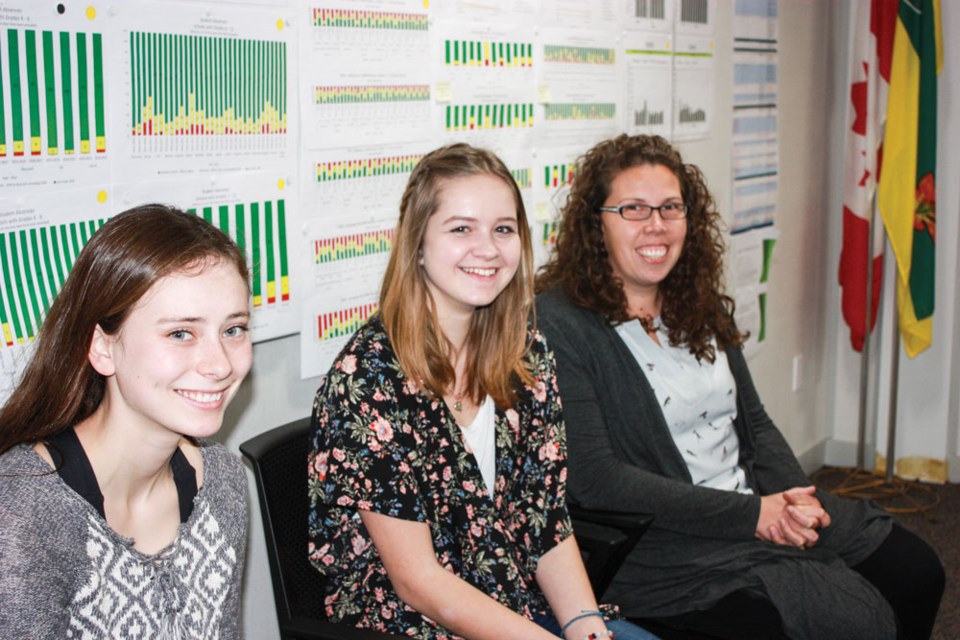Their second trip to a national Science Fair netted Carnduff Education Complex students Leah Macfarlane and Claire Larson a bronze medal during the past academic year. They are now in Grade 11, and perhaps on their way toward being a three-time Saskatchewan representative at the national gathering of problem solvers this year, when it is staged in Ottawa.
The two students were joined by their teacher Jessica Morland for a 20 minute presentation to the South East Cornerstone Public School Division’s board members who were meeting for a general public session on October 11.
The two young women earned the right to advance to the national fair that was held in Regina this past year, by capturing top honours at regional and provincial science fairs. Their first foray into the Canada Wide Science Fair environment had occurred a year earlier, when they were in Grade 9 and had earned a trip to Montreal as their province’s representatives.
Over 400 young participants are greeted at the Canada Wide Science Fair, said Morland who explained how educators in the science field stir the scientific and problem solving minds while improving their procedures and practices. “When things don’t work, then they reconstruct through reasoning and seek scientific findings from elsewhere,” said Morland.
The girls went through extensive analysis and graphing and Morland added that, “I actually like it when I don’t know the answers to their questions either. So they become the experts and learn things I don’t know. Yes, I like that because it means they are seeking options.”
These paths of self-directed learning experiences continue well beyond the classroom as experiments find homes in workshops, garages and basements in homes where even more tools can be deployed to find answers.
“They choose topics they’re passionate about,” said Morland. Or, sometimes they discover an interest along the way, she said. “The Canada Wide Science Fair atmosphere drives and pushes them and that desire goes beyond just the awards,” Morland added.
The two Grade 11 students said their inquiry-based learning was motivated by their curiosity and they have pursued science fair goals since Grade 7.
Morland said she has developed ideas for other teachers who may want to get further involved using the Smarter Science sources.
While the two students spoke about the excitement and social benefits of the national fair, Morland pointed out the awards portion isn’t to be dismissed either since it involves tens of thousands of dollars in prize money as well as valued scholarships.
Leah and Claire’s fact-finding and problem solving desires were fuelled by their intense interest in such things as soil and plant sterilization and more recently an exploratory venture into the world of Alzheimer’s disease and how those afflicted with it respond to digital perceptions. They conducted tests for connecting visuals to the brain and how the client reacts to colours and how their response times are affected during the early onset of Alzheimer’s Disease. The genetic markers drew their attention, they said since family members have been afflicted in the past.
The two related, in a light hearted manner how their early science fair experiments led them into basic observations with pianos or rotting fruit and eventually took them into exploring the effects of subliminal imaging in advertising.
The two girls provided some detail about how they spent a good deal of their time practising their seven minute presentation and how they handled a 10 minute questions and answer session followed by another, shorter, presentation and Q and A.
In conclusion, Morland noted the two young scientists were not only clever, but they also knew how to be observant and responsive to what they were seeing and experiencing.
The Carnduff trio was thanked by board Chairwoman Audrey Trombley and given a round of applause from the appreciative board members who were obviously impressed by the work ethic and the passion for science that had been displayed.



